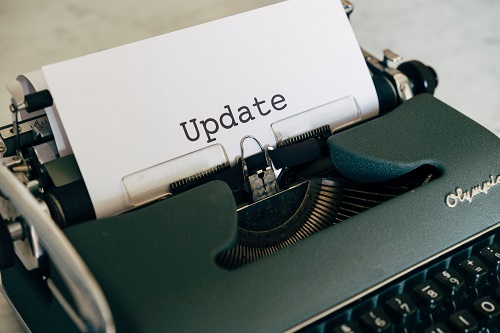What Your Behavioral Health Practice Needs to Know
You’ve likely heard about the recent changes to the CPT code set and are wondering what it means for your behavioral health practice. How will these modifications affect your coding practices? Are there any immediate actions you need to take? Is there anything you need to do differently to ensure you’re getting paid the maximum amount?
The good news is these recent updates are not as monstrous or disruptive as the changes you experienced in 2013. These new modifications were designed to make your E/M visit coding less burdensome.
We have poured through the new guidelines – which, as you know, apply to many other specialties beyond behavioral health – and have pulled out what we believe to be the most significant changes that mental health practices should be aware of.
New CPT Codes for Behavioral Health
While many new procedural codes were released, from what we can tell, none of them appear to apply to behavioral health, except for 99417, which is a new time-based, add-on code.
Providers can use 99417 to bill for additional time spent if a visit exceeds the level-5 code (such as 99215 for a 40-minute follow-up visit or 99205 for a 60-minute intake visit). It is an add-on code that can be billed in 15-minute increments.
The other change that may affect your billing procedures is that 99201 will be deleted. The new guidance says to use 99202 for times beginning at 15-29 minutes and then advance in 15-minute increments with 99205 for 60-74 minutes.
Changes to Complexity-Based Coding
Mental health E/M visits can be coded based on complexity or total time. Until now, most psychiatrists have billed by complexity. The recent changes have simplified things for complexity-based coding.
Historically, there were three categories that made up complexity-based coding for E/M services: History, exam, and medical decision making (MDM). Now, for office or other outpatient services, the criteria for how you determine a complexity-based code has been simplified and only MDM is used. MDM is further broken into these categories: problems, data and risk. There have been some minor modifications to MDM, but in most cases, as before, problems and risk are tightly coupled and can be used to determine the appropriate code.
Initial feedback from our customers is that they will continue to include history and exam, in addition to the elements that support MDM, in their documentation templates. Doing so gives commercial payers time to adapt to the new AMA guidelines and helps providers to continue to adhere to “best practices”, which has a number of benefits, including liability protection.
We will continue to monitor how practices are adapting, as well as the behavior of commercial payers, and we will provide updates as we learn more.
It should also be noted that there is a separate set of guidelines for the remaining E/M services (Hospital Observation, Hospital Inpatient, Consultations, Emergency Department, Nursing Facility, Domiciliary, Rest Home, or Custodial Care Home) in which case all three criteria – history, exam, and MDM – are still used. If this is applicable to you, more information about coding for these types of services can be found on page 5 of the CPT 2021 Professional Edition published by AMA.
Changes to Time-Based Coding
As noted above, there is a new add-on CPT code – 99417 – that will enable providers to bill for time spent beyond the initial time allowance for a specific code. This will allow them to get paid more easily for prolonged blocks, in 15-minute increments, outside the standard session.
Also, where it was once difficult to get paid for time spent working outside the visit, now there is a way to bill for many of those activities, such as time for documenting your notes. Because of this, along with the new 99417 code, providers may choose to use time-based billing more frequently than they did before. We expect this coding to be used more in pediatric or geriatric populations or in complex environments where the provider is doing more work outside of the visit.
CPT Code Changes at a Glance
| CPT Code Additions | Add-on code for time-based coding; can be billed in 15-minute increments. |
| CPT Code Deletions | 99201: New guidance is to use 99202 for times beginning at 15-29 minutes and 99205 to advance in 15-minute increments for 60-74 minutes. |
| Complexity-Based Coding Changes | Simplified for office or other outpatient services to only use medical decision making (MDM). |
| Time-Based Coding Changes | New CPT code (99417) allows providers to get paid more easily for time spent outside the standard session. |
What actions should you take as a result of these code changes?
While we have summarized what we believe to be the biggest impacts for behavioral health, we recommend your first action is to get even more familiar with the new guidelines, ensuring your practice is ready to use them. The AACAP provides some helpful in-depth information in their “Introduction to 2021 Office and Other Outpatient E/M Codes” webinar.
If you are a Valant customer
Within Valant’s EHR software, if you are using complexity-based coding, the tool has exceptional capability for this already and will continue to support the medical decision-making criteria to help you assign the correct code. Within the Mobile Notes application, we are working on a new guided worksheet that will help you determine what level of medical decision making your documentation supports.
If you plan to use time-based coding, Valant has created a new tab in its Managed Mobile Notes template that will allow you to properly document your time spent on various activities. Simply incorporate the new tab into your templates for intake notes and progress notes. If you are not already using Managed Mobile Notes and need some additional guidance on how to set those up, contact Valant’s support for help. Another option that some of our customers have adopted already is to create Macros within Mobile Notes to help document their time-based activities.
The other step you will want to take is to add the new procedure code, 99417, into your Valant instance and update your fee for that code. This is simple to do on your own, but if you have questions about how to do this, Valant’s support team can help.
We will continue to monitor how this new guidance is being used and are committed to supporting these changes within our software as usage evolves.
If you are not a Valant customer
While we cannot speak to the specifics of using another EHR, generally speaking, you will want to use this new information to reassess how you code visits. The most important thing is to ensure you are able to capture the required documentation properly and efficiently to correctly bill by complexity, as well as by time.
If you are interested in learning more about how Valant’s platform automates this work for you, please let us know. We would love to show you a demonstration and answer any questions you may have.




